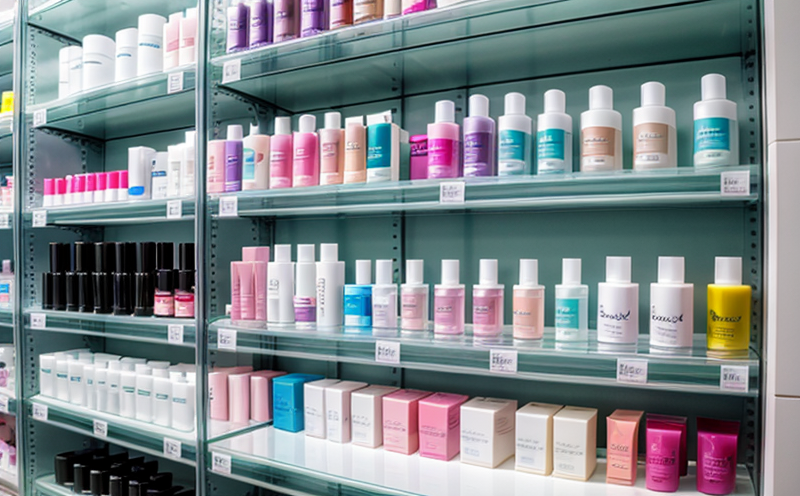Surfactant Stability Testing in Cosmetic Products
Surfactants play a crucial role in many cosmetic products. They are used to create emulsions, foams, and cleansers, among other functions. However, the stability of surfactants can be influenced by various factors such as temperature, light, humidity, and storage duration. Ensuring that surfactant stability is maintained throughout the shelf life of a cosmetic product is paramount for both consumer safety and regulatory compliance.
The primary goal of surfactant stability testing in cosmetics is to evaluate how well the surfactants will withstand the rigors of production, distribution, and storage. This involves simulating real-world conditions that could potentially degrade these compounds over time. By conducting thorough stability assessments early in the product development process, manufacturers can make informed decisions about ingredient selection and formulation design.
There are several key tests used to assess surfactant stability:
One common approach is accelerated aging, where samples are exposed to elevated temperatures and humidity levels that mimic long-term exposure. Another method involves measuring changes in key physical properties like viscosity or surface tension over time.
The importance of accurate testing cannot be overstated. For instance, a study published by the International Organization for Standardization (ISO) highlighted how improper surfactant stability can lead to product instability, which may result in separation, sedimentation, or compromised performance. Properly conducted tests not only enhance product quality but also contribute significantly towards meeting stringent regulatory requirements.
For example, the Cosmetics Regulation EU No 1223/2009 stipulates specific criteria for ensuring that cosmetic products remain stable and effective until their expiration date. Companies must demonstrate this through appropriate testing methods recognized by relevant authorities like the European Union or the U.S. Food & Drug Administration (FDA).
Given these considerations, let us delve into why surfactant stability is so critical in cosmetics.
Why It Matters
The quality and safety of cosmetic products rely heavily on the stability of their components. When it comes to surfactants specifically, maintaining consistent performance throughout a product's shelf life is essential for several reasons:
Firstly, unstable surfactants can lead to undesirable changes in the texture or appearance of cosmetic products. For example, if a cleanser becomes too thick due to decreased solubility over time, it may no longer function effectively when applied.
Secondly, there are concerns regarding potential health risks associated with degraded surfactants. Some studies suggest that certain breakdown products could pose hazards to consumers' skin or respiratory systems if they persist in the final product formulation. Therefore, robust testing protocols aim to minimize such risks by identifying any adverse effects early on.
Lastly, from a business perspective, ensuring reliable performance enhances brand reputation and customer satisfaction. Consumers expect their beauty products to work consistently across different environments. Any issues with stability can damage trust between brands and consumers, leading to lost sales opportunities.
Benefits
Conducting surfactant stability testing offers numerous advantages for cosmetic manufacturers:
| Benefit | Description |
|---|---|
| Enhanced Product Quality | Identifies potential problems early, allowing for corrective actions before launch. |
| Avoidance of Regulatory Penalties | Ensures compliance with local and international regulations regarding product safety and efficacy. |
| Improved Consumer Satisfaction | Promotes brand loyalty by delivering consistently high-quality products. |
| Cost Savings | Reduces waste from defective batches and minimizes post-market recalls. |
| Innovation Opportunities | Encourages exploration of new ingredients and formulations based on stable performance data. |
Industry Applications
Table 1: Industry Applications
| Application | Description |
|---|---|
| Cleansers | Evaluating the stability of surfactants in facial washes, shampoos, and other cleansing agents. |
| Emulsions | Determining whether emulsifying agents remain effective over extended periods. |
| Sunscreens | Assessing the integrity of sunscreen formulations under various environmental conditions. |
| Moisturizers | Checking for any degradation in moisturizing properties due to storage or use. |
| Cosmetic Foams | Evaluating foam stability during production and throughout the shelf life of the product. |





